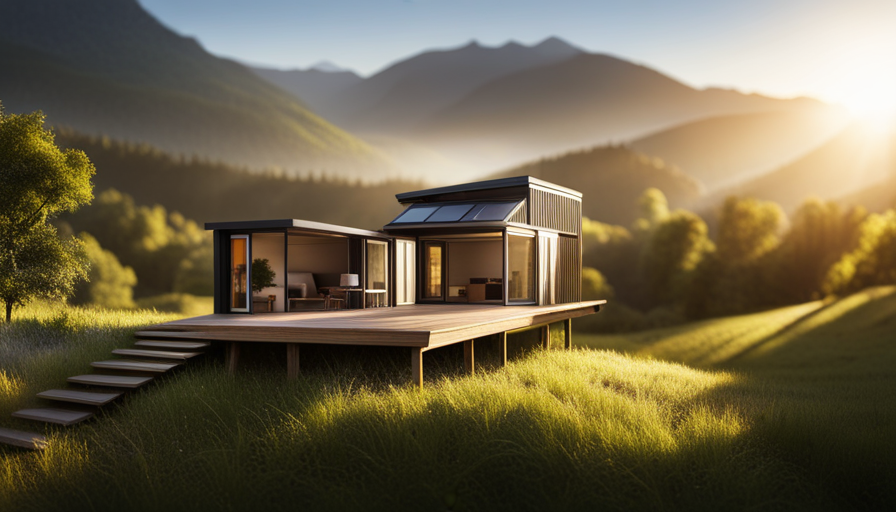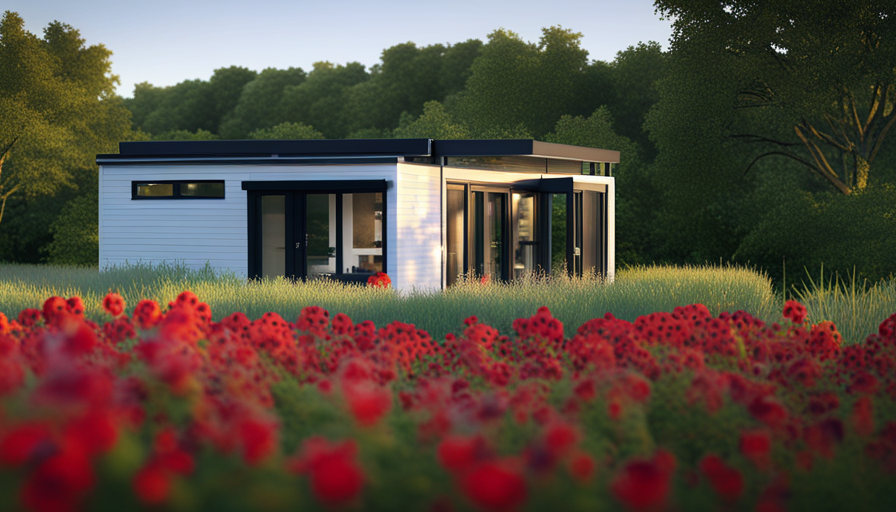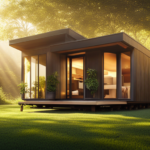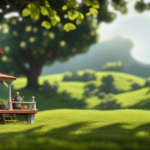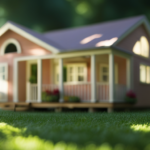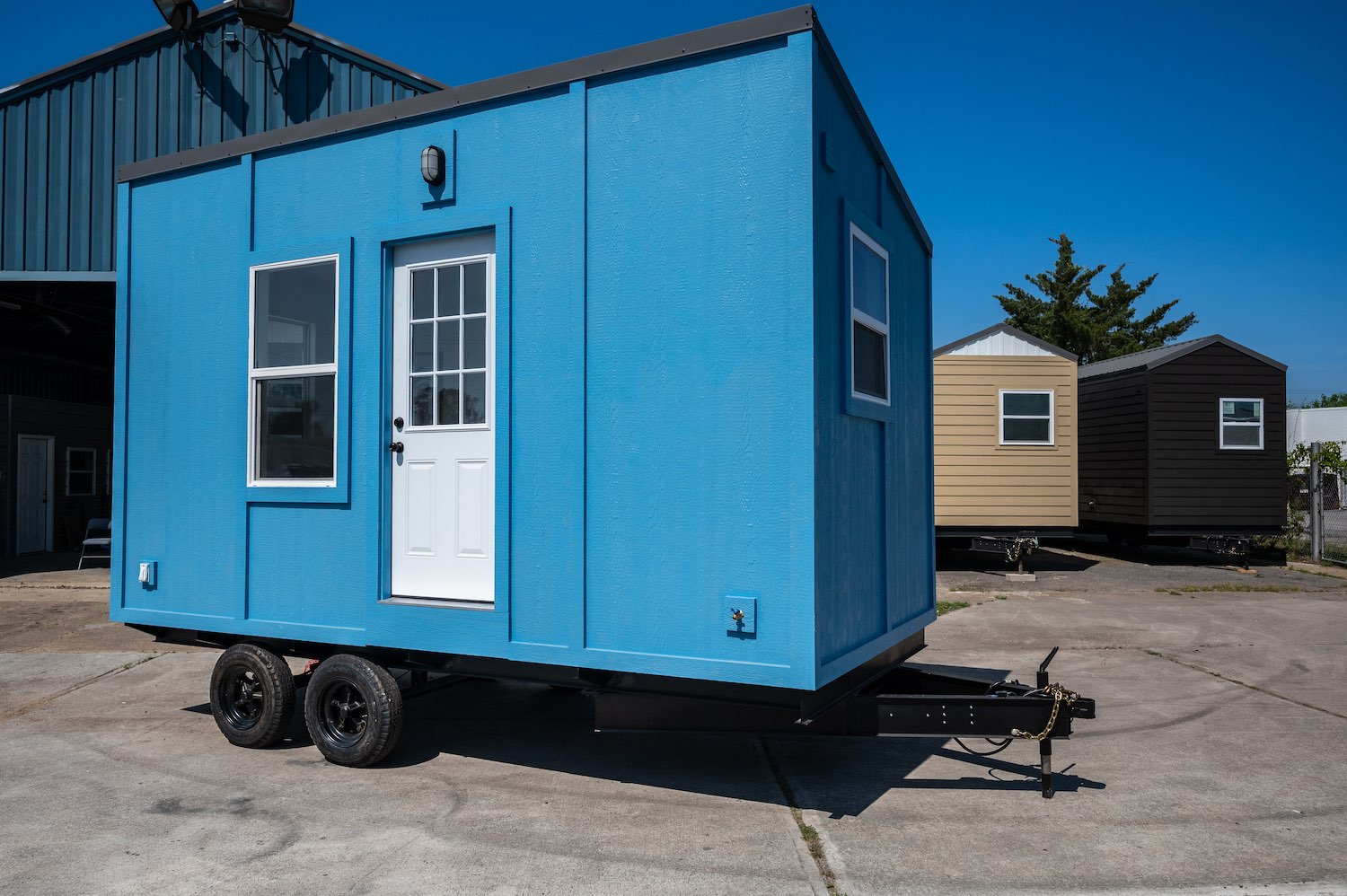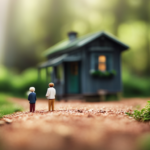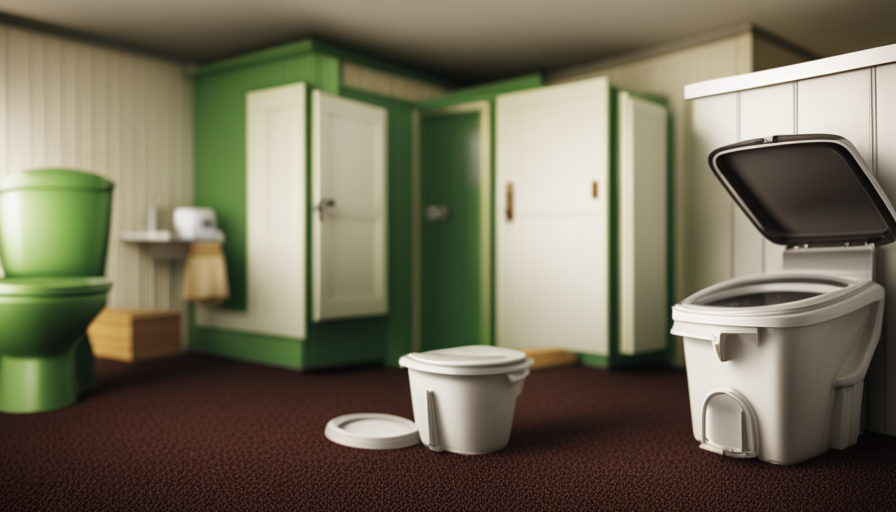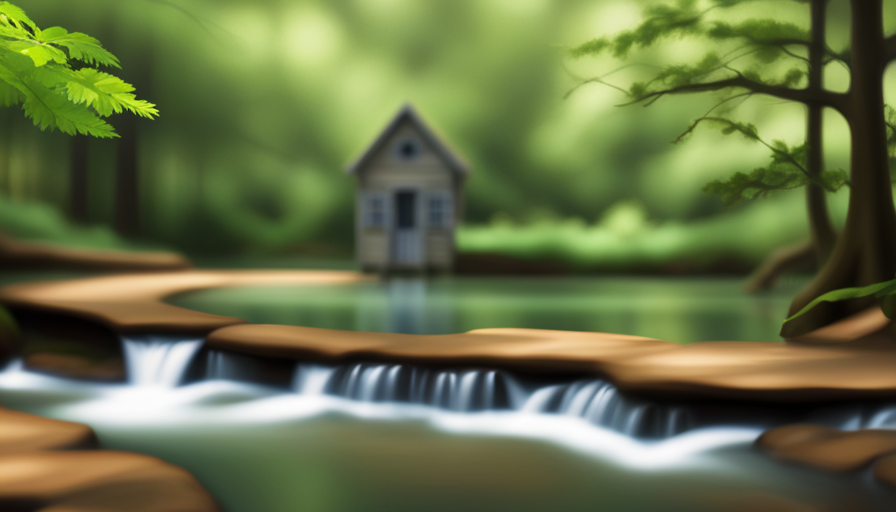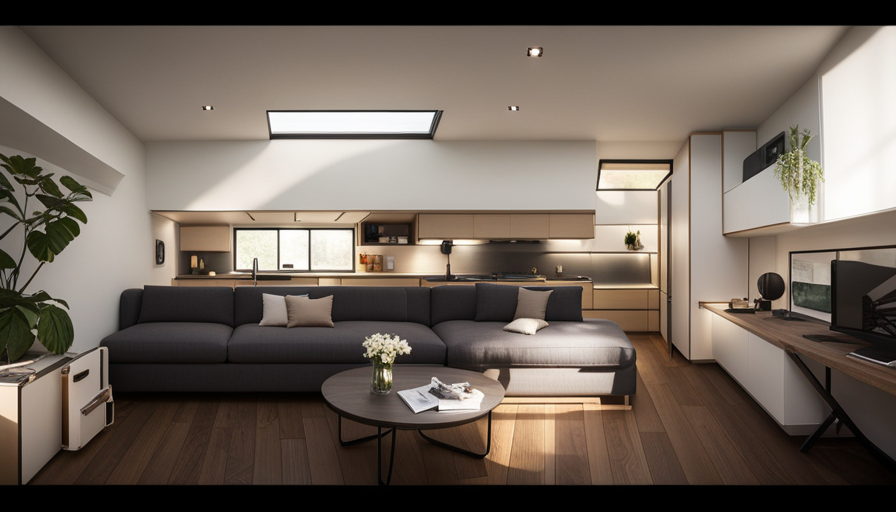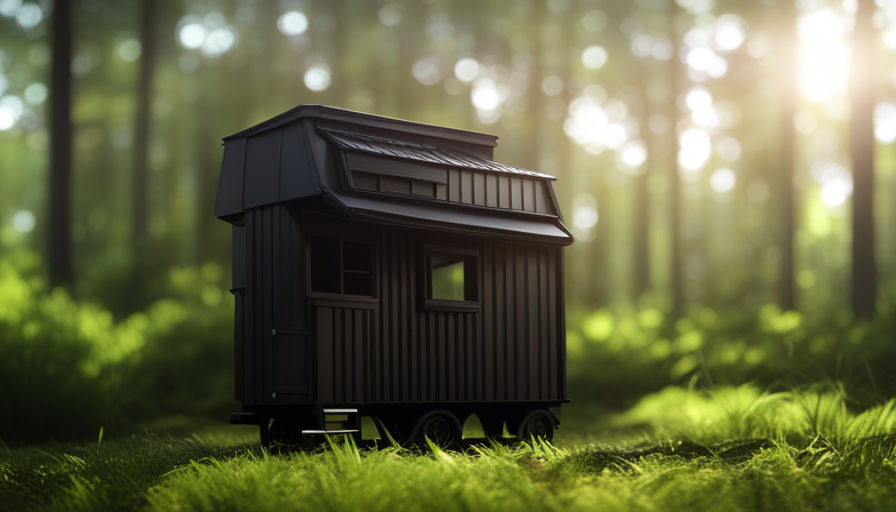How much does a small home cost to purchase?
This burning question has been buzzing in the minds of many people looking for alternative housing options. As an avid admirer of tiny homes, I embarked on a quest to uncover the truth behind their price tags. Brace yourself for a deep dive into the realm of numbers and figures, where we will dissect the various factors that contribute to the cost of owning a tiny house.
Size matters, my friends. The first determinant of the price is the size of the tiny house itself. From cozy cottages to more spacious dwellings, each square foot comes with a price.
But that’s not all – location and land costs, materials and construction expenses, and additional features also play a significant role in the final tally. We’ll also explore the world of utilities and off-grid systems, maintenance and upkeep costs, and the potential savings and financial benefits of living in a tiny house.
So grab your calculators and join me on this enlightening journey as we compare the cost of tiny houses to traditional homes and discover tips for budgeting and saving money when buying a tiny house. Get ready to crunch those numbers and uncover the truth behind the price tag of your dream tiny home.
Key Takeaways
- The cost of buying a tiny house is influenced by factors such as size, location, materials, and additional features.
- Larger tiny houses tend to have higher prices due to the need for more materials and labor.
- The cost of a tiny house can be affected by the cost of living in the area and any zoning regulations in place.
- Land costs vary by region, with urban areas typically having higher costs, suburban areas having moderate costs, and rural areas offering more affordable options.
Consider the Size of the Tiny House
If you’re looking to buy a tiny house, you’ll need to consider how big or small you want it to be. The size of the tiny house plays a significant role in determining its cost. Generally, the larger the tiny house, the higher the price tag. This is because larger tiny houses require more materials and labor to build.
Additionally, the cost of living in the area where you plan to place your tiny house can affect the overall cost. Some regions have higher costs of living, which can drive up the price of land and construction materials.
Moreover, zoning regulations can also impact the cost of a tiny house. Some areas have strict regulations that may require additional permits or modifications to the tiny house, which can increase the overall expenses. Therefore, it’s crucial to research the zoning regulations in your desired location to avoid any unexpected costs.
Taking into account the size of the tiny house, cost of living, and zoning regulations, you can begin to get a clearer picture of how much it will cost to buy your dream tiny house.
Moving on to the next section about location and land costs, it’s important to consider these factors in order to make an informed decision.
Location and Land Costs
When looking for a location for your tiny home, you’ll find that land costs can vary depending on the area and amenities available. It’s important to consider land availability and zoning regulations when determining the overall cost of buying a tiny house. To help you make an informed decision, I have compiled a table that showcases the average land costs in different regions across the United States.
| Region | Average Land Cost (per square foot) | Zoning Regulations |
|---|---|---|
| Urban | $10 – $30 | Restricted |
| Suburban | $5 – $20 | Moderate |
| Rural | $1 – $10 | Flexible |
As you can see, urban areas tend to have higher land costs due to limited availability and stricter zoning regulations. On the other hand, rural areas offer more affordable land options with flexible zoning regulations. When considering the location for your tiny home, it’s essential to weigh the cost of land against your desired lifestyle and proximity to amenities.
Now that we have discussed the influence of location and land costs on the overall price of a tiny house, let’s delve into the next section about materials and construction expenses.
Materials and Construction Expenses
Moving on to materials and construction expenses, it’s important to consider the various costs involved in building your tiny home. When it comes to choosing materials, there are cost-saving tips that can help you stay within your budget.
Opting for affordable materials such as plywood instead of expensive hardwoods can significantly reduce costs without compromising the overall quality of your tiny home. Additionally, considering alternative construction methods like using recycled or salvaged materials can also be a cost-effective approach.
The construction process itself can also impact the overall expenses. Hiring a professional builder might seem like the easiest option, but it can be quite costly. If you have the skills and time, taking a DIY approach can save you a significant amount of money. However, it’s important to note that building a tiny home requires knowledge and expertise in various fields, so proper research and planning are crucial.
To further cut down expenses, you can consider purchasing pre-built kits that include all the necessary materials and instructions. These kits often come at a lower cost compared to buying materials separately, and they can also save you time and effort in sourcing and measuring the materials yourself.
In the next section about additional features and customization options, we will explore how these choices can impact the overall cost and the level of personalization you can achieve without breaking the bank.
Additional Features and Customization Options
To achieve a higher level of personalization and add unique features to your tiny home, you may consider exploring additional customization options that can elevate the overall aesthetic and functionality of your space. Customization options allow you to tailor your tiny house to your specific needs and preferences, making it a truly one-of-a-kind home.
Here are five customization options to consider:
-
Interior Design Choices: From paint colors to flooring materials, selecting the right interior design elements can completely transform the look and feel of your tiny home. Consider incorporating elements like built-in storage solutions, multipurpose furniture, and clever space-saving techniques to maximize the functionality of your space.
-
Customized Layout: With a tiny house, every square inch matters. Customizing the layout allows you to optimize the use of space and create a flow that suits your lifestyle. Consider working with a professional designer or architect to create a layout that meets your specific needs.
-
Unique Exterior Features: Adding unique exterior features such as a rooftop deck, a porch, or custom siding can enhance the overall curb appeal of your tiny home and make it stand out from the crowd.
-
Energy-Efficient Upgrades: Incorporating energy-efficient upgrades like solar panels, LED lighting, and high-performance insulation can not only reduce your carbon footprint but also save you money on utility bills in the long run.
-
Smart Home Technology: Embrace the latest advancements in smart home technology by integrating features like voice-controlled lighting, automated temperature control, and remote security systems into your tiny home.
Considering these customization options can help you create a tiny home that reflects your personal style and meets your specific needs. Now, let’s move on to discussing utilities and off-grid systems.
Utilities and Off-grid Systems
Consider embracing off-grid systems and utilities to power your tiny home, allowing you to break free from traditional energy sources and embrace a more sustainable and self-sufficient lifestyle. Off-grid living offers the opportunity to generate your own power, reducing your carbon footprint and minimizing your reliance on the grid.
One of the most popular renewable energy options for tiny homes is solar power. Installing solar panels on the roof of your tiny house can provide a reliable source of electricity, powering your appliances and lighting. Additionally, solar power can be stored in batteries for use during cloudy days or at night.
Another renewable energy option is wind power, which can be harnessed through small wind turbines. These turbines can generate electricity even in areas with limited sunlight.
Furthermore, incorporating energy-efficient appliances and LED lighting can significantly reduce your energy consumption.
As you consider the utilities and off-grid systems for your tiny home, keep in mind that the initial investment for these systems can be higher, but the long-term savings and environmental benefits make it a worthwhile choice.
Transitioning to the subsequent section about ‘financing and insurance’, it’s important to explore options that can help offset the upfront costs associated with off-grid living.
Financing and Insurance
When it comes to financing and insurance for tiny houses, there are several options available to potential buyers. As the popularity of tiny houses continues to grow, more financial institutions are offering specialized loans for these unique homes. This means that you can secure a loan specifically designed for purchasing a tiny house, making the process much smoother.
Additionally, some builders may offer in-house financing options, allowing you to work directly with them to secure the necessary funds.
Insurance coverage for tiny houses can vary depending on the insurance company and the specific circumstances of your tiny house. Some insurance providers offer specialized policies for tiny houses, while others may require you to insure your tiny house as a recreational vehicle or as a standard homeowners policy. It is important to carefully review your options and select a policy that provides adequate coverage for your investment.
When considering the financing and insurance aspects of buying a tiny house, it’s crucial to thoroughly research and compare different options. This will ensure that you find the best financing option and insurance coverage that meets your needs.
- Markdown Bullet List:
- Peace of mind knowing your investment is protected
- Flexibility in choosing the best financing option for your budget
- Specialized insurance policies tailored to tiny houses
- In-house financing options offered by some builders
In the next section, we’ll explore the maintenance and upkeep costs associated with owning a tiny house.
Maintenance and Upkeep Costs
Take a moment to reflect on the ongoing responsibilities and expenses that come with owning and maintaining your cozy little abode. When it comes to tiny houses, it’s not just about the initial cost of purchase, but also the long-term investment required to keep it in good condition.
One of the key decisions to make is whether to opt for DIY maintenance or hire professionals for upkeep. Maintaining a tiny house can be a rewarding experience if you’re willing to put in the time and effort. DIY maintenance allows you to have full control over the process and potentially save on labor costs. However, it requires a certain level of skill and knowledge. Regular tasks like cleaning, painting, and basic repairs can be easily handled by homeowners themselves, reducing the need for professional assistance.
On the other hand, some maintenance tasks may be better left to professionals. Electrical wiring, plumbing, and structural repairs require specialized expertise to ensure safety and compliance. Hiring professionals can provide peace of mind and ensure that the job is done correctly.
In terms of long-term investment, regular maintenance is essential to preserve the value of your tiny house. Neglecting upkeep can lead to costly repairs down the line. By proactively addressing maintenance needs, you can extend the lifespan of your home and potentially increase its resale value.
Transitioning into the subsequent section about potential savings and financial benefits, it’s important to consider how maintenance and upkeep costs can be offset by the overall affordability and efficiency of a tiny house.
Potential Savings and Financial Benefits
If you’re ready to embrace a simpler and more cost-effective lifestyle, owning a tiny house can lead to potential savings and financial benefits you never imagined.
One of the main advantages of tiny houses is their affordability compared to traditional homes. The initial cost of purchasing a tiny house is significantly lower, with prices ranging from $20,000 to $100,000 depending on factors such as size, materials, and customizations. This affordability allows individuals to become homeowners without the burden of a large mortgage, saving them thousands of dollars in interest payments over the years.
Furthermore, the impact of tiny houses on financial freedom is undeniable. With lower monthly expenses, including reduced utility bills and lower property taxes, tiny house owners can allocate their funds towards other financial goals such as saving for retirement or paying off debt. Additionally, the minimalistic lifestyle associated with tiny houses promotes a more conscious consumption pattern, leading to further savings in the long run.
In terms of long-term savings, tiny houses require less maintenance and upkeep compared to traditional homes. The smaller size means less space to clean and fewer repairs needed. Moreover, the energy-efficient features commonly incorporated into tiny houses, such as solar panels and composting toilets, can significantly reduce utility costs.
Transitioning into the subsequent section about comparing the cost of tiny houses to traditional homes, it is important to analyze and understand the financial implications of each option.
Comparing the Cost of Tiny Houses to Traditional Homes
Although tiny houses may initially seem more affordable, it’s important to carefully consider and compare the overall cost of owning a tiny house versus a traditional home. When comparing the cost of tiny houses to traditional homes, several factors should be taken into account.
-
Construction and Maintenance Costs: Tiny houses are generally cheaper to construct and maintain compared to traditional homes. The smaller size means lower material and labor costs, and maintenance expenses are also reduced. However, it’s important to consider the long-term durability and quality of materials used in tiny house construction.
-
Land and Location: While tiny houses require less land, finding suitable locations to park or place them can be challenging. Land prices vary greatly depending on the region and proximity to amenities. Traditional homes, on the other hand, are typically built on private lots that may appreciate in value over time.
-
Resale Value and Financing: Tiny houses may have limited resale value compared to traditional homes. Additionally, obtaining financing for tiny houses can be more difficult due to their unconventional nature.
Considering the pros and cons of living in a tiny house and the environmental impact of tiny houses can also influence the decision-making process. It’s crucial to weigh these factors before making a final decision on purchasing a tiny house.
Transitioning into the subsequent section, I’ll provide tips for budgeting and saving money when buying a tiny house.
Tips for Budgeting and Saving Money when Buying a Tiny House
Slash your spending and stash some savings when selecting a small space. When it comes to buying a tiny house, budgeting and saving money are crucial. Here are some tips for downsizing and decluttering, as well as finding affordable tiny house builders.
Firstly, downsizing and decluttering is essential when moving into a tiny house. Take the time to go through your belongings and get rid of things you don’t need. This will not only help you save money on storage solutions but also make your new living space more organized and functional.
Next, finding affordable tiny house builders can significantly impact your overall cost. Research different builders and compare prices. Look for builders who offer customization options within your budget. Additionally, consider purchasing a pre-owned tiny house, as they’re often more affordable than brand new ones.
Another way to save money when buying a tiny house is to be resourceful and do some of the work yourself. If you have the skills, consider taking on some of the construction or finishing touches. This can help you cut costs and personalize your tiny house to your liking.
When it comes to buying a tiny house, proper budgeting and saving money are key. By downsizing and decluttering, finding affordable builders, and being resourceful, you can make your dream of owning a tiny house a reality without breaking the bank.
Frequently Asked Questions
Can I build a tiny house on any type of land?
Yes, it is possible to build a tiny house on agricultural land, but zoning regulations vary. Some areas have specific criteria, such as minimum lot size or required permits. It’s essential to research local regulations before starting construction.
Are there any restrictions on the size or design of a tiny house?
There are no design restrictions or zoning regulations for tiny houses. It’s wonderful how we can freely express our creativity and build our dream homes without any limitations or obstacles.
How much does it cost to connect a tiny house to utilities?
Connecting a tiny house to utilities can vary in cost depending on factors like location and desired amenities. However, opting for off-grid living can eliminate utility costs altogether, offering the pros of self-sustaining tiny homes while reducing long-term expenses.
What are some common financing options for purchasing a tiny house?
Tiny house financing options include personal loans, RV loans, and tiny house-specific loans. Pros include flexibility and freedom, while cons include high interest rates and limited loan options.
Are there any tax benefits or incentives for owning a tiny house?
There are tax deductions and government subsidies available for owning a tiny house. These incentives vary depending on factors such as location, size, and usage of the tiny house.
Conclusion
In conclusion, after analyzing the various costs associated with buying a tiny house, it’s clear that this small living trend isn’t as cost-effective as it may initially seem. While the idea of a minimalist lifestyle and reduced expenses may be appealing, the reality is that the financial burden of purchasing a tiny house, along with its maintenance and customization, can quickly add up.
So, if you’re looking to save money, perhaps sticking to a traditional home might be the ironically more economical choice.
Hi, I’m Emma. I’m the Editor in Chief of Tiny House 43, a blog all about tiny houses. While tree houses are often associated with childhood, they can be the perfect adult retreat. They offer a cozy space to relax and unwind, surrounded by nature. And since they’re typically built on stilts or raised platforms, they offer stunning views that traditional homes simply can’t match. If you’re looking for a unique and romantic getaway, a tree house tiny house might just be the perfect option.
